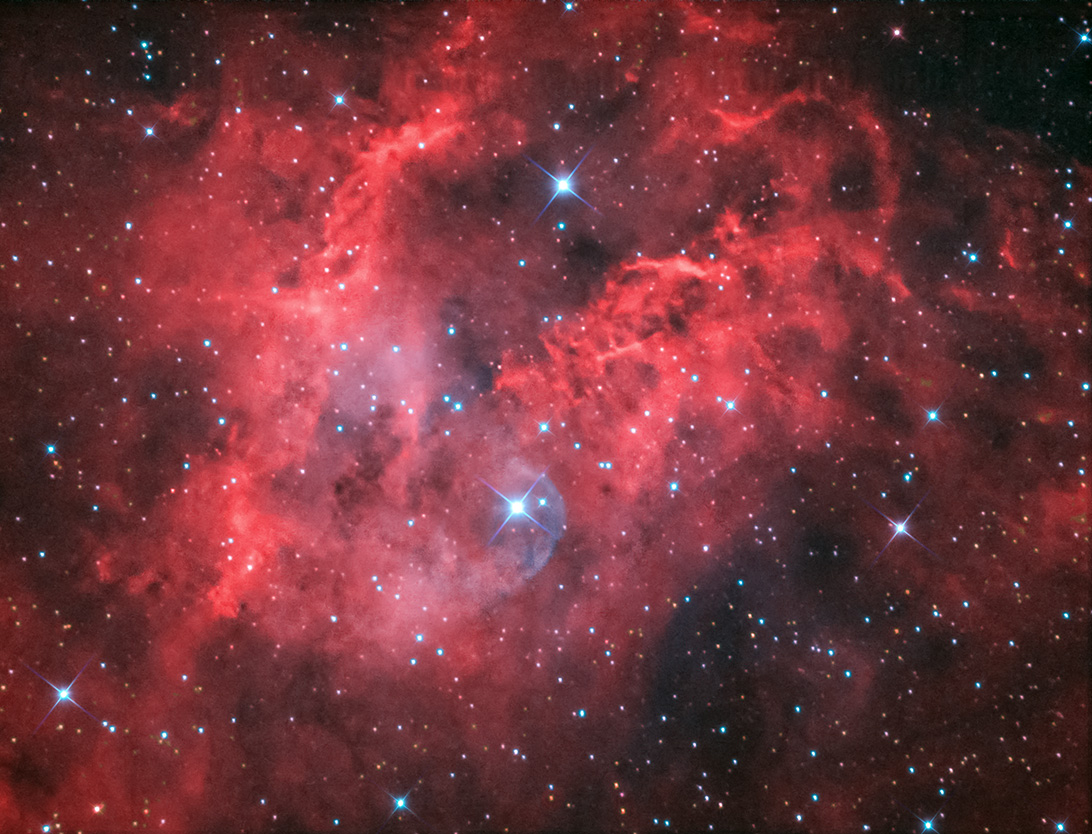Sh2-280
Image Credit: Donald Waid - Image Date: January 2020
Equipment: 10 in. RC Telescope - Apogee F8300M Camera - Paramount MX Mount
Sh2-280 1,2
Sh2-280, as listed in the Sharpless Catalog of HII regions, is located in the constellation Monoceros approximately 5,500 light years from the Earth. It is a very near, about 2 degrees south, of the more famous Rosette Nebula. Perhaps this is the reason it seems to be overlooked by many amateur astronomers. It is, in my opinion, a remarkable celestial object with many interesting features. According to research, the nebula is illuminated and ionized by the bright, type O7, star, HD 46573, located near the center of Sh2-280. A feature I find interesting is the blue shock front located to the right of the star. This structure stands out in the OIII filtered image. I, however, have not found any literature, or research, describing this feature.
The image above was assembled from data taken through Ha and OIII narrowband filters. Ha is mapped to Red, OIII is mapped to Green and Blue. The stars were overlayed with data obtained from a separate RBG filtered image.
1 http://galaxymap.org/cat/view/sharpless/280
2https://it.wikipedia.org/wiki/Sh2-280
Sh2-280, as listed in the Sharpless Catalog of HII regions, is located in the constellation Monoceros approximately 5,500 light years from the Earth. It is a very near, about 2 degrees south, of the more famous Rosette Nebula. Perhaps this is the reason it seems to be overlooked by many amateur astronomers. It is, in my opinion, a remarkable celestial object with many interesting features. According to research, the nebula is illuminated and ionized by the bright, type O7, star, HD 46573, located near the center of Sh2-280. A feature I find interesting is the blue shock front located to the right of the star. This structure stands out in the OIII filtered image. I, however, have not found any literature, or research, describing this feature.
The image above was assembled from data taken through Ha and OIII narrowband filters. Ha is mapped to Red, OIII is mapped to Green and Blue. The stars were overlayed with data obtained from a separate RBG filtered image.
1 http://galaxymap.org/cat/view/sharpless/280
2https://it.wikipedia.org/wiki/Sh2-280
